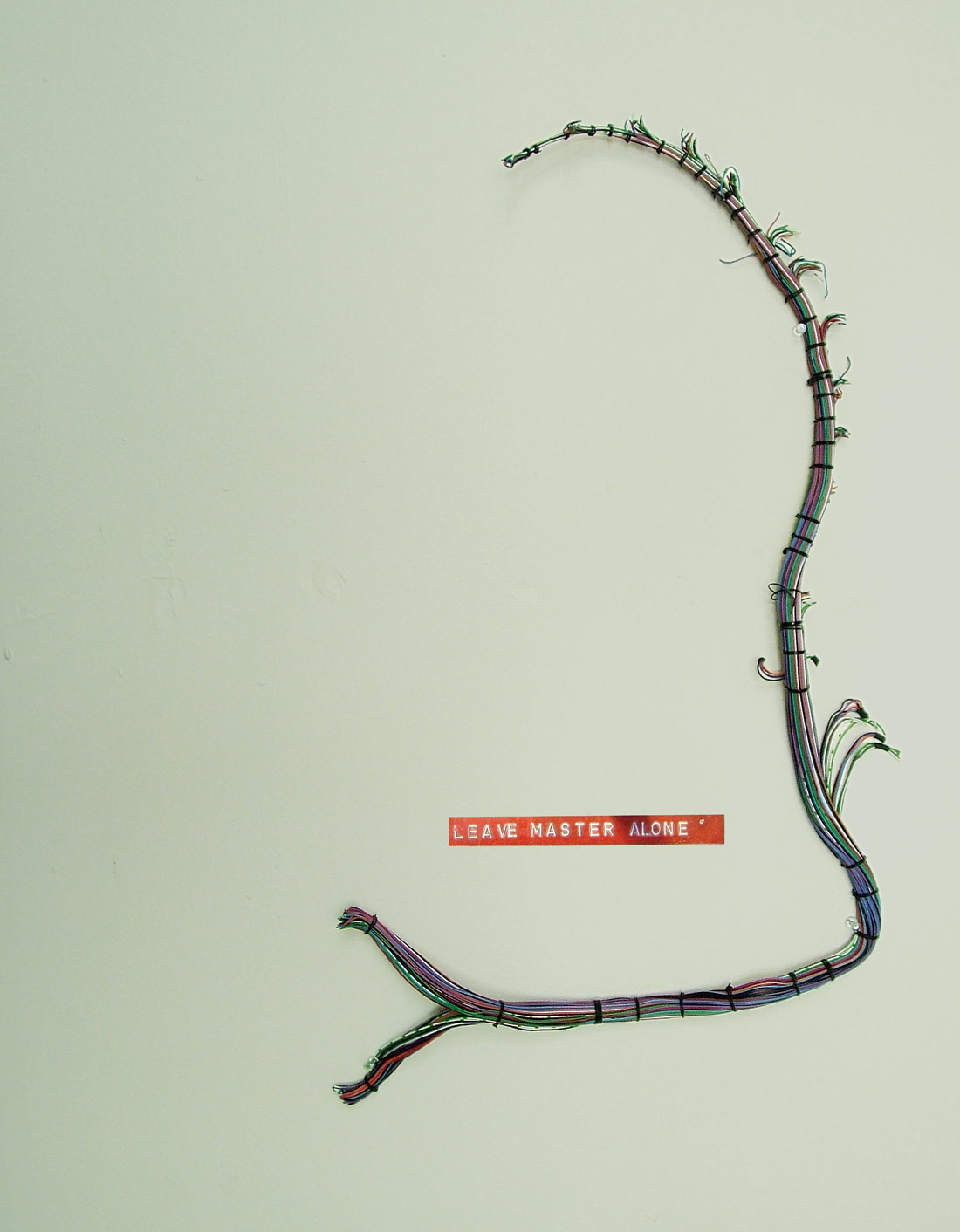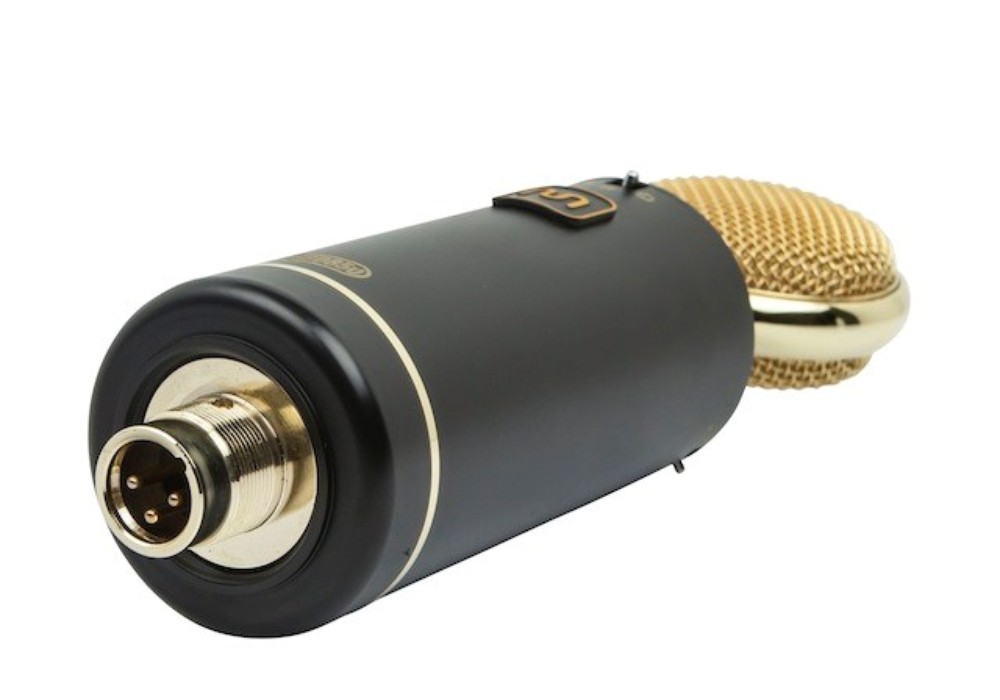I first came across the KSM353 at the Shure booth at the 2009 New York AES Convention. After two long days of pretending that I could hear anything in a discerning way in this huge, bustling expo center, I finally did hear something that caught my ear -my own "midrangey" voice, sounding uncharacteristically deep and detailed, but without the annoying nasal quality that it can have if captured incorrectly. I was immediately curious and knew I'd have to follow up. The KSM353 is a curious entry (or is it a re-entry?) into both the Shure product line and the pantheon of professional ribbon mics in general. The KSM353 is, in fact, the exact same microphone as the Crowley & Tripp El Diablo, which was manufactured from early 2008 until April of 2009, at which time Shure procured the rights to the Crowley & Tripp name, and with it, the rights to the El Diablo and Naked Eye mics (the latter rebranded as the Shure KSM313), as well as the proprietary "Roswellite" ribbon technology based on a composite plastic ribbon coated in a conductive material. With the acquisition of the El Diablo design came a consistently-reliable manufacturing chain, and Shure has been able to source the same components from the same US manufactures, then hand-assemble the KSM353 at the Shure plant in Wheeling, IL. In the age of the ubiquitous corporate takeover, it's nice to know that there are some corporations who can still operate with good intentions. Upon taking the KSM353 out of its handsome wooden case, designed to keep the microphone in a vertical position when not in use (a practice you should employ with any ribbon mic to prevent the ribbon element from sagging over time), I was immediately struck by its weight and girth. At 1.4 lbs, this essentially featureless metal cylinder could pass as the proverbial "blunt object" that starts off so many episodes of Law & Order. Its rugged build was immediately apparent, and Shure having touted the near-indestructibility of the ribbon element, I was able to use this microphone with the same relaxed approach that I would an SM57. My expectations were initially quite high for the KSM353, so I thought it should "play with the big boys" for its first time out. I used it as the figure-8 half of an M/S pair along with a Neumann U 47. The sound of the room at Camp Street Studios (ex-Fort Apache, Tape Op #22) has graced some of indie-rock's best-loved albums, and we had a hell of a drummer on this session. Long story short? The KSM353 did not disappoint. The studio owner had warned me to watch out for the brash transients of the room, but the KSM353 handled them just perfectly. The immediate image we captured was deep and detailed; full and well-rounded; without too much air or cymbal noise. After tracking, we pulled up the M/S setup and a Coles 4038 mono overheard on the board, and I looked at my co-engineer in awe; "It sounds like Bonham." Later, while mixing the tracks, I found the transients captured by the M/S setup were in fact a tad overwhelming, so we brought the U 47 down a few dBs and let the KSM353's stereo image take precedence, providing a real mellowing effect to the room's transients. There it was -the best drum sound I've ever achieved. Awesome. On a following session at Verdant Studios (owned by senior contributor Pete Weiss, Tape Op #23), I was able to use the KSM353 on a variety of sources. I was working with a band heavily influenced by the British Invasion, The Replacements, and other midrange-focused pop/rock music. I placed the KSM353 at a 45-degree angle to the front of the kick drum and achieved a smooth, pillowy sound -absolutely perfect for jazz or even folk music. We needed a bit more of the beater's attack for this music, so we ended up supplementing the tracks with an inside-kick dynamic mic. Nevertheless, the KSM353 was providing such clarity and detail to the kick drum -and at such a high output level -that it really sounded like a large-diaphragm condenser minus all the extraneous air around the kit. We continued on with the session, using the KSM353 for fuzzed-out guitar solos, tambourine, piano, and a Beatles-esque snare overdub. Time and time again, I was able to track an overdub, pull up the fader, and sit in amazement at how easily these tracks could just exist in the mix -no compression and no EQ on any of the KSM353-recorded tracks, just an incredibly smooth, detailed sound without any excess air or other fast transients. I was so impressed with the KSM353, but I really didn't know what other microphone I could compare it to for the prospective consumer; it was sort of like a Royer R-121 (Tape Op #19), to which the KSM313 is actually quite similar, in that it's a ribbon mic marketed as being almost indestructible (albeit through differing designs) and in that it captured a beautiful midrange sound of whatever source I stuck it on. But there was a clearly audible, extended bottom end in the Shure lacking in the Royer. It was only after speaking with Bob Crowley, one of the mic's original designers, that I learned the design intention; the frequency response and unusually-high output level for a ribbon mic were actually painstakingly modeled on that of a Neumann U 47 fet! I took a look at the frequency response for both the KSM353 and a U 47 fet, and son-of-a-gun, they are very similar. So why would Crowley & Tripp decide to create a ribbon mic modeled on a U 47 fet? Why not just make another large-diaphragm condenser? The idea was to avoid something called "tympanic artifact" (the resonance that large-diaphragm condensers can exhibit at higher levels), while still maintaining the robust sound of the FET circuit. And with the Roswellite technology, the ribbon is built to maintain its shape and stay resilient under even the harshest SPL situations. That leaves Shure in a tough spot -marketing a ribbon microphone as a seriously-cheaper alternative to a $10,000 condenser mic! Gripes? Just a couple. The shockmount was sort of lame; the mic always slipped a little bit, and while it never fell out, I was always a little worried that it would. Also, consumers of the original El Diablo were treated to a lifetime warranty (which Shure will honor), but those purchasing the rebranded KSM353 will instead get Shure's standard two-year deal. But these are small prices to pay. The KSM353 is an absolutely beautiful-sounding microphone, it's made in the US, and it's built to take a lickin'.($2695 street; www.shure.com)
Microphones | No. 72
SM27 & SM137 condenser mics
by Mike Jasper
Shure's new SM27 replaces the KSM27 (the "Dixie Chicks mic"), but it isn't just a clone with a new color and new name. Nope, this charcoal grey microphone has a much better self-noise figure than the...





_disp_horizontal_bw.jpg)